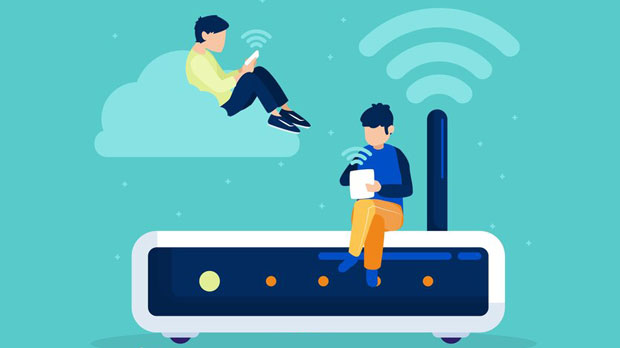Wireless proxy applications play an essential role in enhancing online security, maintaining anonymity, and improving access speeds. Among the numerous proxy services available, PYPROXY and Every Proxy stand out as two popular solutions. This article aims to compare the performance of these two proxies specifically in wireless environments, focusing on their speed, reliability, and overall user experience. Introduction to Wireless Proxy ServicesWireless proxy services act as intermediaries between the user and the internet, ensuring that the user’s real IP address is hidden, and that secure communication is maintained. These services are particularly useful in wireless environments, where users need to connect to public or unsecured networks. The choice of proxy service can significantly impact the quality of the browsing experience, especially in terms of speed and security. When comparing PyProxy and Every Proxy, it is crucial to assess their features, ease of use, compatibility with various wireless devices, and performance on different network speeds.Overview of PyProxyPyProxy is a versatile proxy service known for its flexibility and efficiency in handling various types of proxy requests. It is particularly appreciated for its performance in wireless proxy applications, where the network conditions can vary greatly. PyProxy is built to maintain a stable connection even in less-than-ideal environments, ensuring minimal latency and high throughput.PyProxy uses advanced algorithms that enable it to optimize data flow and reduce bottlenecks, which is essential for wireless applications where network speed and reliability can fluctuate. Additionally, PyProxy’s ease of setup and user-friendly interface makes it a top choice for users seeking a straightforward yet robust solution for wireless proxy needs.Overview of Every ProxyEvery Proxy, on the other hand, is another popular proxy service that provides reliable performance for both wired and wireless connections. It is designed with a focus on simplicity and stability, offering a streamlined user experience. However, unlike PyProxy, Every Proxy may sometimes struggle with maintaining consistent speeds, especially in fluctuating wireless environments where connection instability is a common issue.While Every Proxy generally offers decent performance in stable wireless networks, users may experience slower speeds or more frequent connection drops when the wireless environment is not optimal. Despite these occasional shortcomings, Every Proxy is known for its reliability and ease of integration into existing systems.Key Performance Factors in Wireless EnvironmentsWhen comparing the performance of PyProxy and Every Proxy in wireless applications, several key factors come into play:1. Network Stability: Wireless networks are prone to interruptions and speed fluctuations, which can affect proxy performance. PyProxy has built-in features that help it adapt to changing network conditions, making it a more stable choice for users in areas with unreliable wireless connections. On the other hand, Every Proxy might experience occasional lags or connection drops when the network conditions are unstable.2. Latency: Latency, or the delay between sending and receiving data, is a critical factor in wireless proxy performance. PyProxy offers optimized routing, reducing latency even on congested or high-traffic networks. Every Proxy, while generally reliable, can experience higher latency in some cases, particularly when dealing with wireless networks with limited bandwidth.3. Data Throughput: The ability of a proxy to handle high amounts of data transfer is vital for users who require quick and uninterrupted internet access. PyProxy excels in high-throughput situations, efficiently managing large amounts of data without compromising speed. Every Proxy, although capable, may experience slower speeds when handling large data transfers on wireless networks, particularly under high traffic conditions.4. Connection Reliability: A reliable connection is crucial for maintaining a smooth online experience, especially when using wireless networks that may be prone to disruptions. PyProxy has a stronger reputation for maintaining stable connections, even on networks with fluctuating signals. Every Proxy, in contrast, might struggle in wireless environments that are prone to interference, leading to occasional disconnections or timeouts.User Experience and Ease of SetupAnother critical factor to consider when comparing PyProxy and Every Proxy is the ease of use and setup. PyProxy offers a comprehensive setup guide and a simple interface that allows users to configure the proxy with minimal effort. The service is designed to be compatible with a wide range of wireless devices, from smartphones to laptops, ensuring users can easily integrate it into their daily activities.Every Proxy also offers a user-friendly interface but may require more manual configuration, especially for users who are not familiar with advanced proxy settings. While Every Proxy is generally easy to set up, it lacks some of the advanced features and customization options that PyProxy provides, which could be a limitation for more tech-savvy users.Security Features and AnonymityIn terms of security, both PyProxy and Every Proxy offer standard features such as encryption and IP masking, ensuring that users' data remains secure while browsing. However, PyProxy goes a step further by implementing advanced security protocols that provide additional layers of protection against potential threats, which is especially valuable when using wireless networks in public or unsecured locations.Every Proxy, while secure, does not offer as many advanced security features as PyProxy. For users who prioritize high levels of security, PyProxy’s robust encryption and additional security measures make it the preferred choice.Which Proxy Performs Better in Wireless Applications?In conclusion, while both PyProxy and Every Proxy offer reliable performance for wireless applications, PyProxy generally outperforms Every Proxy in terms of speed, stability, and overall reliability. PyProxy’s advanced algorithms, low latency, and high throughput capabilities make it the superior choice for users who require smooth and uninterrupted service in wireless environments.Every Proxy, while a solid option, may struggle to maintain performance in environments with fluctuating network conditions or high data transfer requirements. Its simplicity and ease of use make it a great option for casual users, but for those who need a more reliable and faster experience, especially in wireless settings, PyProxy is the better choice.Ultimately, the decision between PyProxy and Every Proxy will depend on the user’s specific needs, including the type of wireless network they are using, their security requirements, and the importance of speed and reliability in their online activities.
Sep 05, 2025



































































